Close Looks at Black-crowned Night Herons
I came across them in two different places last week
I’ve been frequenting El Rio Preserve in recent weeks. It is always a nice place to visit, whether or not you are a birder. At over 100 acres in size, the preserve’s water and surrounding riparian vegetation offer a calming presence. What has brought me here more often these days is the plans by the City of Marana to drain the lake in order to conduct some needed maintenance. Last week, this was the view of the ‘lake’ from the viewing platform. There are just a few water holes left but there are still plenty of resources for birds and wildlife. Most of today’s photos were taken from what I call “the island” located at the blue arrow in the photo. However, any spot along the shoreline offers great opportunities to observe birds and wildlife. All you need to do is sit and wait!
A few days prior to this visit I was with a Tucson Bird Alliance group at Sweetwater Wetlands and we saw an adult Black-crowned Night Heron hiding deep in the reeds. We have Black-crowned Night Herons in the Tucson area year-round in most wetlands and ponds. They do their hunting between dusk and dawn when there is no competition from the other herons and egrets. During the day, they will rest in trees, bushes or in the reeds.
The adult Black-coroned Night Heron has the black crown that it is named for. That black crown contrasts with the birds’ white/gray belly and wings. It takes young Black-crowned Night Herons about three years to obtain that adult plumage. Until then, the young Herons are brown and streaky. There were two of these juveniles near the ‘island’ early one morning at El Rio. They were in the deep shade.
The two juvenile Black-crowns remained on their perch for a long time. Despite being “photo-bombed” by an incoming Great Blue Heron, they remained stoic. During the first hour that we were watching from that spot, a number of Green Herons, Great Blue Herons, and Great Egrets flew around the lake bed, but these two herons just sat still.
Eventually the Black-crowned Night Heron on the lower perch flew away and the other Heron then began to move a bit, pausing after a few steps. This species is a stocky bird compared to other Herons and Egrets. The orange eye of the young bird will turn red by the second or third year.
The Night Heron began walking up the branch it was on. In this shot, you can also see that the plumage of its neck gives a blurry look. The spotted feathers on the wings are not blurry at all compared to the feathers on its neck. That’s a feature of the bird, and not a result of how I shot the photo.
Finally near the top of the branch, the Black-crowned Night Heron stopped and rested in the sunlight. The bird remained awake and alert for a long time. Eventually, it flew out of sight to another perch.
It was nice to see that pair of young birds on what turned out to be a four-heron morning. There were Great Blue Herons, Great Egrets, and Green Herons to go along with those Black-crowned Night Herons.



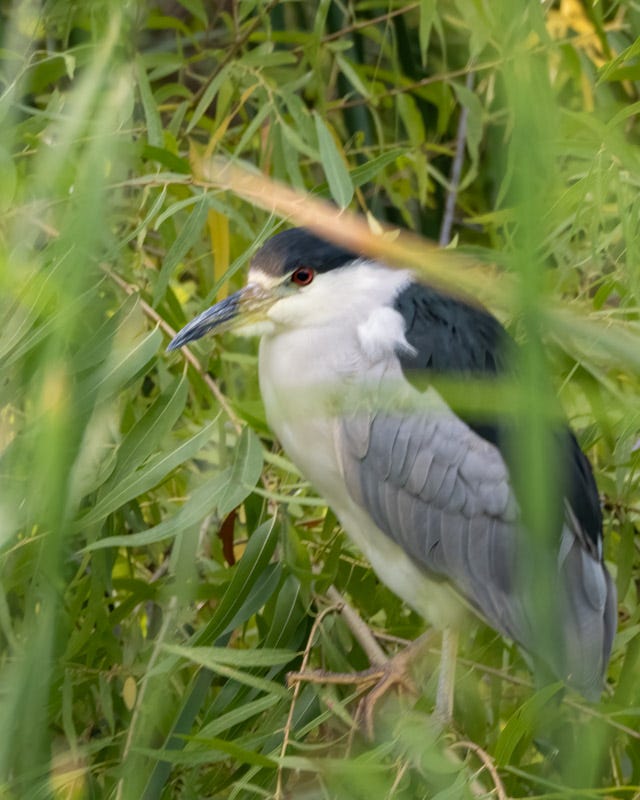
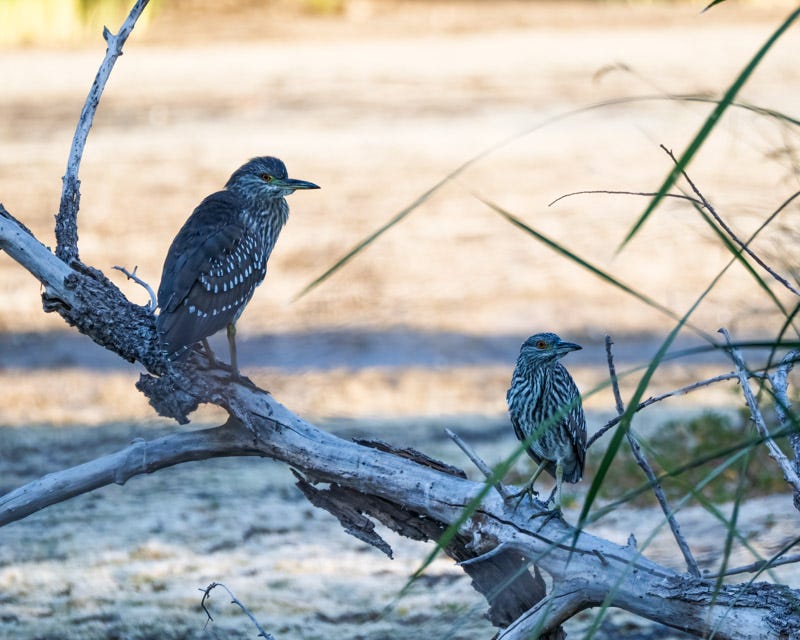
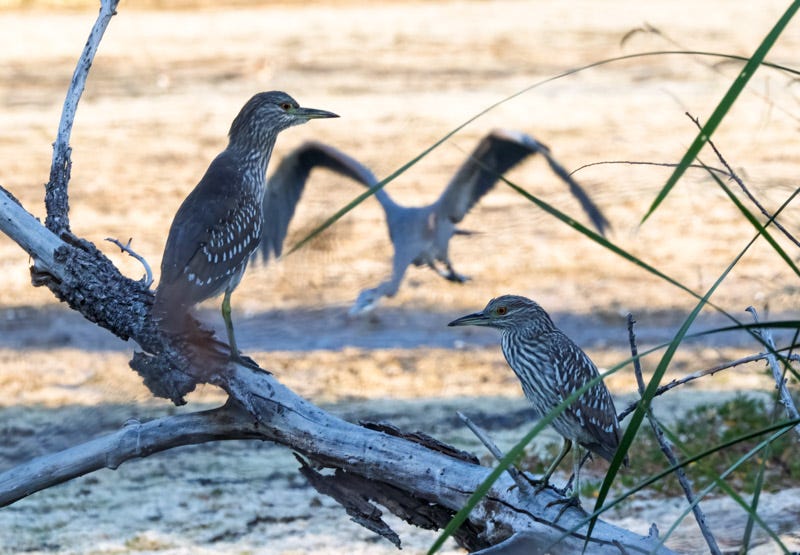
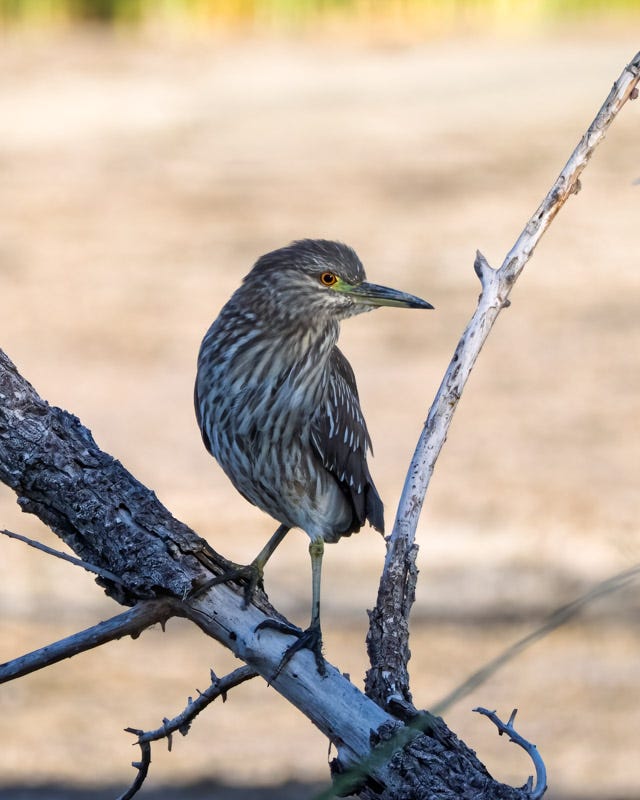
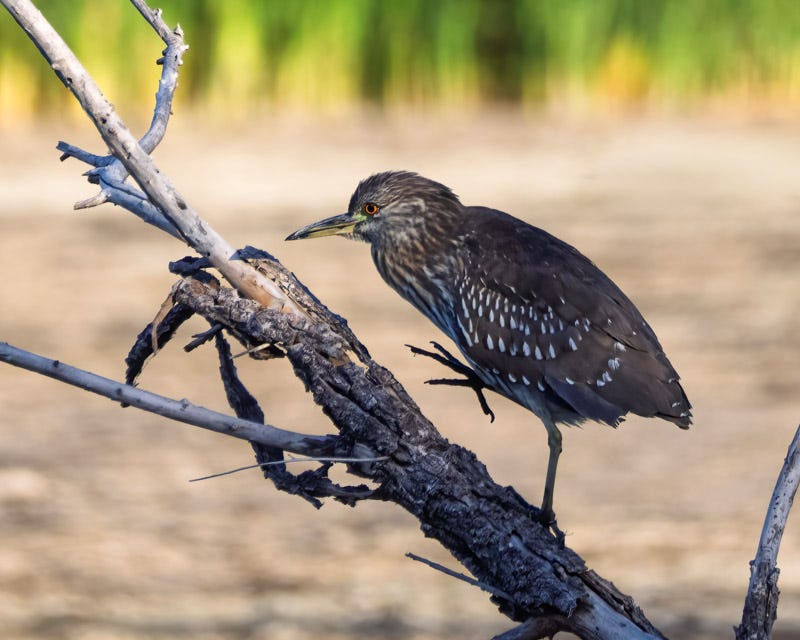

Always love seeing the Heron's! Thanks Dan!
Good photos and narrative